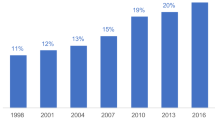Abstract
The opportunities for increasing student contributions to the costs of higher education are many. Student loans have received much attention both in literature and in practice. While they have not always worked well, we have argued that suitably reformed, they can constitute a productive, though limited, mechanism for cost recovery. In certain countries, however, other mechanisms may be more appropriate. Indeed, the policy maker is presented with a wide menu of policy choices, though some creativity may be required in their application to particular local settings. Currently, loan programs exist in over 50 developing and industrial countries, and have been introduced most commonly to assist students to pay their living expenses.
In order to improve financial effectiveness, programs should be targeted toward the most needy and able students. Hidden subsidies should be limited by charging positive real interest rates, combined with repayment plans that take account of the likely pattern of graduate earnings. Default reductions require that loan programs be managed by institutions with the capacity and financial incentives to collect - namely banks, private collection agencies, or taxation departments. Such reforms offer great potential to transform small programs into relatively efficient forms of student support.
Larger programs, however, may be more difficult to manage. Some countries have considered alternatives which preserve the basic concept of paying for education from future income. The most notable is a graduate tax in which a student pays a fixed percentage of income over the entire working life, regardless of how much is repaid. Another option is national service which require students to perform socially productive work in exchange for part or all of education costs. In the presence of an effective tax system, a graduate tax could bring in significantly more revenue than traditional loan programs. Besides improved financial efficiency, income contingent payments may be more equitable since they limit the risk to poorer students. In countries with weak taxation systems, this option may not be feasible.
Similar content being viewed by others
References
Albrecht, D. and Ziderman, A. (1991). Deferred Cost Recovery for Higher Education: Student Loan Programs in Developing Countries. World Bank Discussion Paper, No. 137. Washington, D.C.: The World Bank.
Barnes, J. and Barr, N. (1988). Strategies for Higher Education: The Alternative White Paper. Edinburgh: Aberdeen University Press.
Blaug, M. (1973). An Introduction to the Economics of Education. London: Penguin.
Brittain, J.A. (1972). The Payroll Tax for Social Security. Washington, D.C.: Brookings Institution.
Colclough, C. (1990). Raising additional resources for education in developing countries: are graduate payroll taxes preferable to student loans? International Journal of Educational Development 10, 2/3, 169–80.
Friedman, M. (1962). Capitalism and Freedom. Chicago University of Chicago Press.
Hope, J. and Miller, P. (1988). Financing tertiary education: an examination of the issues. Australian Economic Review 4.
International Academy of Education. (1990). Rethinking the Finance of Post-Compulsory Education. (Processed).
Jimenez, E. (1987). Pricing Policy in the Social Sectors: Cost Recovery for Education and Health in Developing Countries. Baltimore: Johns Hopkins University Press.
McMahon, W. (1988). Potential resource recovery in higher education in the developing countries and the parents' expected contribution. Economics of Education Review 1, 1, 135–152.
Middleton, J., Ziderman, A. and Adams, A.V. (Forthcoming). Skills for Productivity: Policies for Vocational Education and Training in Developing Countries. New York: Oxford University Press.
Psacharopoulos, G., Tan, J.-P. and Jimenez, E. (1986). Financing Education in Developing Countries: An Exploration of Policy Options. Washington, D.C.: The World Bank.
Psacharopoulos, G. and Woodhall, M. (1985). Education for Development: An Analysis of Investment Choices. New York: Oxford University Press.
Reuterberg, S.E. and Svensson, A. (1990). Student financial aid in Sweden. Higher Education Policy 3, 3.
Tilak, J. and Varghese, N.V. (1991). Financing higher education in India. Higher Education 21, 1, 83–102.
U.S. Department of Education (1990). Reducing Student Loan Defaults: A Plan for Action. Washington, D.C.
Whalley, J. and Ziderman, A. (1990). Financing training in developing countries: the role of payroll taxes, Economics of Education Review 9, 4, 377–387.
Woodhall, M. (1983). Student Loans as a Means of Financing Higher Education: Lessons from International Experience. World Bank Staff Working Paper No. 599. Washington, D.C.: The World Bank
Woodhall, M. (1987). Lending for Learning: Designing a Student Loan Programme for Developing Countries. London Commonwealth Secretariat.
Woodhall, M., ed. (1989). Financial Support for Students: Grants, Loans or Graduate Tax? London, Kogan Page.
Author information
Authors and Affiliations
Rights and permissions
About this article
Cite this article
Albrecht, D., Ziderman, A. Student loans and their alternatives: improving the performance of deferred payment programs. High Educ 23, 357–374 (1992). https://doi.org/10.1007/BF00138624
Issue Date:
DOI: https://doi.org/10.1007/BF00138624




